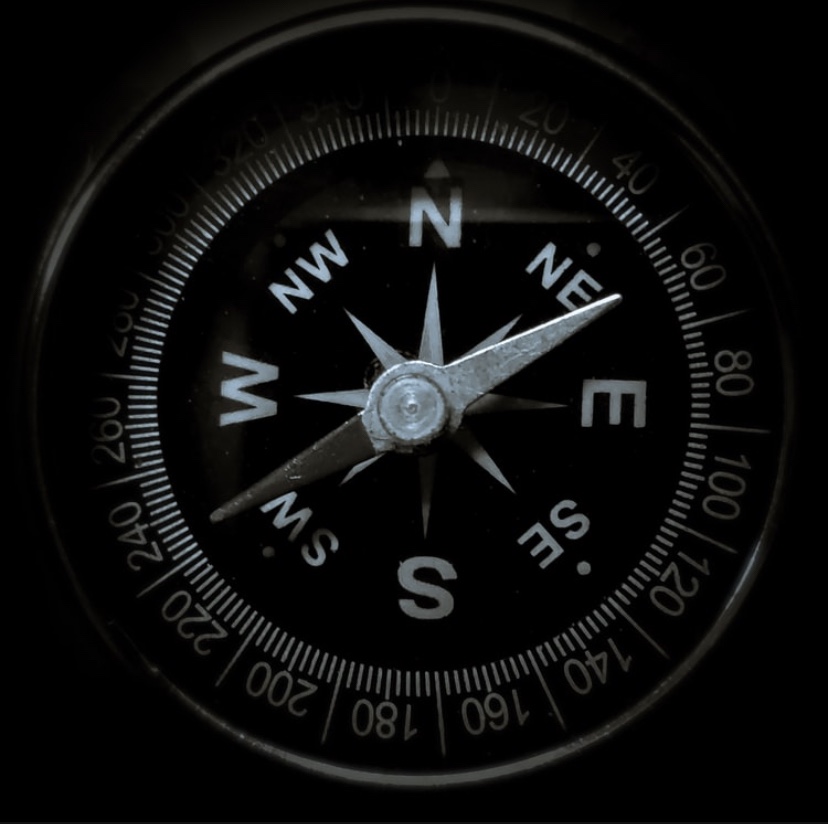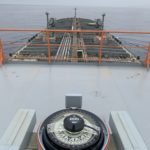Magnetism on ships
Till a few years back, I didn’t have any idea about the magnetic compass coefficients or magnetism on ships and how it’s related to the magnetism of the earth.
But the most important thing I have learned in my career so far is that, we do not understand things or they are too complicated only until we try to understand them.

I have seen third mates, who say passage planning or cargo planning are really tough jobs, and they are not sure whether they can handle it.
Then once they start taking interest. It did not take much time. And I have seen them become pro in next rank jobs in a a very little span of time.
Similarly, the stuff like magnetic compass coefficients or magnetism or how they determine the heading of our magnetic compass was too complicated for me.
But when i tried to get deeper into this, i found out that its not as difficult as we think it is. Really speaking it’s not so tough to understand this topic.
Let’s try to know the stuff and how they are related to the magnetic compass.
So we will try with the magnetism and the properties of a magnet first.
Table of contents
Properties of a magnet
As in our childhoods we all have played with magnets.
If you remember, at first you did not have any idea about what it is or how it works or what it is used for.
Then either someone told us that it attracts some metal Or while playing we got to know it by ourselves.
We got to know that if we bring some metal piece will stick to the magnet.
Then slowly we came to know that it only attracts certain types of objects which are made of the same metal.
After some time, we came to know that it only attracts the objects made of iron. Thus our knowledge about the magnets started increasing.
And one fine day, when we had two magnets, we tried to bring both of them closer just to see what happens, and for our surprise it started repelling.
Then we flipped one magnet, and it started attracting the other magnet.
So one side of the magnet repelled, while the other side attracted.
Maybe at that time we did not understand the reason behind it. But practically we all know the basic properties of a magnet.
The basic properties or the basic concept is that, when we bring any two magnets closer, they repel and attract each other.
Let’s say for an example that we have two magnet bars. Which are identical in shape and size. Shape we can take like 5cm long, 2 cm broad and 1cm thick.
So we have two magnets of size 5cm X 2cm X 1cm. And for better understanding let’s name them.
Let’s say the ends of magnet one are “A” and “B”. While the second magnet ends are “C” and “D”.
So when we bring the ends “A” and “C” closer, they start attracting, and similarly ends “B” and “D” are also attracting each other.
Now we flip the sides. Now when we try to bring the end “A” of the magnet one closer to the end “D” of the magnet two, they start repelling each other.
Now matter how hard we try, we can’t make them stick together.
Basically the ends of a magnet are called “poles”. So each magnet have two poles. One end is called the “red pole” while the other end is called the “blue pole”. The colour coding is given by the scientists, so as to easily and better understand the magnetic properties.
To say again, if we bring the blue pole of one magnet closer to the blue pole of another magnet, they will repel each other.
While on the other hand if we bring the blue pole of one magnet closer to the red pole of another magnet, it will attract.
Just like magnets, the earth also shows magnetic properties. Which means, there is a magnetic filed around earth.
To summarise the properties. There are two basic properties of a magnet.
- Like poles repel each other and unlike poles attract each other.
- when a magnet is suspended freely anywhere on earth, it will align itself in such order that its red pole will point towards the north magnetic pole of the earth, while its blue pole will point towards the south magnetic pole of the earth.
Magnetic field
We have understood that basic properties of the magnets in the paragraphs above. Now i guess we can proceed a bit further about how the magnet works.
And by the working of a magnet means what is there in it which makes it a magnet and makes it attract certain objects.

So lets the earlier example, that we bring two magnets closer, they either repel or they attract each other. And you also must have noticed that when you bring same poles closer, they repel. the more you you bring them closer, the more force you have to apply to keep them together.
Now when you stick the same poles together, that it the time you have to apply the maximum force.
The same is also applicable for the opposite poles.
When you bring opposite poles together, they start attracting each other. and as you bring them closer, they start attracting each other with even more force.
So why this force of attraction or repulsion varies with distance.
Actually It is the magnetic field of a magnet which governs the force.
Every magnet has some area around it, in which you will feel the magnetic strength of that magnet. Once you take the metal or the other magnet out of that area, there will be no attraction or repulsion.
The area around the magnet where its magnetic force can be felt is called the ”magnetic field”.
So that was the simple definition of a magnetic filed. and now if we say that in scientific language, there are magnetic lines of force, which come out of the red pole of the magnet and re enter the magnet at its blue pole.
Or we can say it other way round, that from one end the magnetic lines come out and the same magnetic lines enters the other end.
Now as we have already discussed in earlier blog that earth also has a magnetic field around it. Thus like the bar magnet we also have magnetic north and Magnetic south poles on earth.
So these Poles also exhibit the similar properties as the magnet bar. The magnetic lines exits from one pole and travels towards the opposite pole.
When these magnetic lines come out of the red pole(I.e. Magnetic south pole), they are coming out vertically from the surface of the earth. Similarly when they enter the blue pole(I.e. Magnetic north pole) again they are vertical to the surface of the earth.
But when they are somewhere in between the poles, they are not vertical to the surface of the earth. They make an oblique angle to the surface of the earth.
I think till now it was not too difficult to understand. So lets move ahead a bit further.
We were talking about the magnetic lines of force. Which come out vertically from the South magnetic pole travel towards the north magnetic pole and then again enter the north magnetic pole vertically.
So when they are at the poles, they are vertical to the surface of the earth. but what about the angle when they are somewhere in between. What is it called.
Dip
You guessed it right, The angle between the magnetic lines and the earth’s surface is called the ‘’Dip’’.
Though the earth is not a perfect sphere, but for most calculation purpose it is taken as a sphere.
But as we see around us, we only see flat surface of the earth. Which means we can only see it as horizontal.
Thus the angle between the magnetic lines of force and the horizontal is termed as Dip.
So we can say that at the Magnetic north pole the dip is +90°, while the dip on magnetic south pole is -90°.
And on any intermediate latitude, the value will be somewhere between 0 to 90°.
While the magnetic lines at any intermediate latitude are neither horizontal nor perpendicular to the surface of the earth. So the magnetic field at any place on earth shall have two components.
The components will be the horizontal component and the vertical component. And as it is visible that the value of the component will depend upon the angle of dip.
As we know that the position of poles and the magnetism depends upon the heading of the ship when she was being built.
While there is one more thing which is very important to be discussed, and it is called the ”Total force”.
Total force
Again if we take the example of that short bar magnet, we can experience that the its strength to pull or attract is more at the ends than at the broader side.
Similarly on earth, the magnetic field is stronger at the ends, while it gets weaker and weaker as the latitude reduces and gets minimum at the magnetic equator.
So the total force at any place on earth, is the strength of the magnetic field at that place.
I know we have still not covered about the magnetic compass coefficients. But to cover the coefficients of magnetic compass we should know the basics of magnetism and magnetic compass.
Magnetism on ships- Onboard merchant ships
Till now we have discussed about magnetism. So now lets see about how the magnetism on ships affects our headings, deviation and generates errors in magnetic compass.
As we know that ship is made of steel. Which includes many grades of steel. While the outer material is mostly made of hard iron like the ship’s hull, deck, bulkheads etc.
While the other structures like girders, beams, funnel are made of soft iron.
Now let’s see how it affects or is affected by the structure onboard ship.
Actually there are two kinds of magnetism on ships. They are called ”Permanent magnetism” and the “Induced magnetism”.
Permanent magnetism
The hard iron structures like the deck, ship’s hull are made of hard iron. And the hard iron is basically very difficult to magnetise.
But once it is magnetised, it is very difficult to demagnetise the same material.
So the magnetisation of hard iron structures is called the ”Permanent magnetism”
Induced magnetism
While on the other hand, the soft iron materials like the beams, girders, funnel and other materials which are made of soft iron are very easy to magnetise.
The thing is that till the time magnetic filed is passing through them and their lengths are aligned in the direction of the magnetic field they will be magnetised.
But as soon we remove the magnetic filed, they will come back to their natural state and demagnetised.
So this was about the permanent and the induced magnetism.
Now lets see in next article about how come the ship’s structure gets magnetised.

